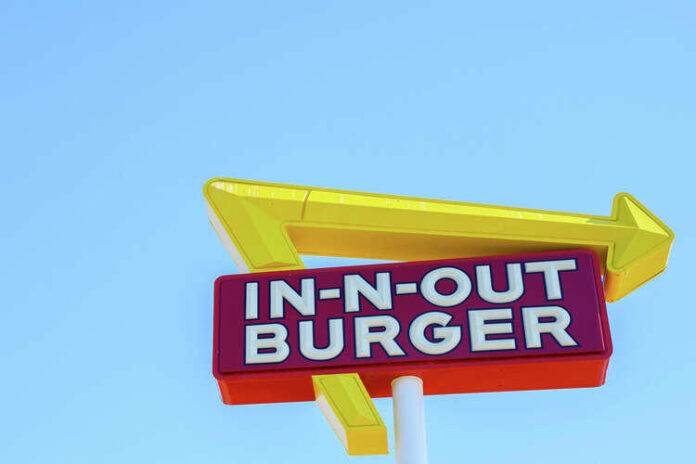
Core Insights
- Legal Precedent Alert: In-N-Out’s aggressive federal litigation strategy signals a new era of corporate accountability for social media content creators who target established brands.
- Financial Stakes: With over 600,000 combined followers, Bryan Arnett’s monetized content empire now faces potential revenue forfeiture and substantial damages in a case that could reshape influencer liability.
- Brand Protection Blueprint: The burger giant’s swift legal response demonstrates how family-friendly companies are weaponizing trademark and defamation law to combat viral pranks that threaten brand reputation.
By Samuel Lopez – USA Herald
LOS ANGELES, CA – The era of consequence-free social media pranks may be ending as Southern California’s beloved burger chain In-N-Out Burger escalates its legal war against content creators, filing a federal lawsuit that could fundamentally alter how YouTubers approach brand-targeted content.
Bryan Arnett, a YouTube creator with more than 600,000 followers across multiple platforms, now faces the full force of In-N-Out’s legal team after his April 25 prank video (no longer available on YouTube) crossed what the company describes as “unsettling and bizarre” boundaries. The lawsuit, filed Friday, June 20, in federal court, represents more than just corporate frustration—it’s a calculated legal strike that could bankrupt the content creator and establish precedent for similar cases nationwide.
Arnett’s controversial video, filmed at what appears to be In-N-Out’s Glendale location on Easter Sunday when all locations were closed, showcased the creator dressed in authentic-looking employee attire.
In the video, Arnett impersonates an In-N-Out drive-thru employee wearing a red apron, white collared shirt, and paper In-N-Out hat. What followed was a calculated campaign of brand impersonation that legal experts suggest crossed multiple federal boundaries.
The content, while no longer easily searchable on YouTube, remains accessible and documents Arnett’s interactions with unsuspecting customers. His performance included offering non-existent menu items, making sexually explicit comments to customers, and staging elaborate scenarios involving fake health violations.
“I like watching my wife sleeping with other men. Is that something you’d be interested in?” Arnett asked one customer, according to court filings. The video also featured staged incidents involving cockroaches and condoms allegedly found in food orders, with Arnett telling customers about a “pretty bad cockroach problem this week.”
This lawsuit represents the culmination of Arnett’s documented history of targeting In-N-Out locations. Previous incidents include attempting to pay for strangers’ orders exclusively with pennies—resulting in management ejection—and placing unauthorized “employee of the month” plaques in dining areas.
Industry observers note that each incident appeared designed to test legal boundaries while maximizing viral potential. The April 25 video, however, crossed what In-N-Out’s legal team characterizes as clear defamation and trademark infringement thresholds.
In-N-Out’s federal complaint alleges multiple violations, including false representation of the company and defamatory statements that “reflected directly and negatively on In-N-Out.” The Orange County-headquartered chain first attempted resolution through a May 2 cease-and-desist letter before escalating to federal litigation—a progression that legal analysts suggest was carefully calculated.
The lawsuit seeks comprehensive relief: permanent banning from all In-N-Out locations, financial damages covering proven losses, and forfeiture of all revenue generated from the offending content. This multi-pronged approach demonstrates sophisticated legal strategy designed to create maximum financial impact on content creators who target the brand.
This isn’t In-N-Out’s first rodeo. The company previously pursued legal action against another YouTuber in 2018 for similar pranks, establishing a clear pattern of aggressive brand protection. The chain’s international trademark maintenance through strategic pop-ups worldwide further demonstrates their commitment to brand control, even when facing copycat restaurants globally.
Arnett’s Monday response video—filmed while consuming In-N-Out food in his car—revealed either calculated confidence or dangerous naivety about his legal exposure. “I’m not gonna sit here and act surprised,” he stated. “When I went out and filmed the video, I kinda knew what kind of waters I was stepping into.”
His admission that he was “kinda teetering the line a little bit, pushing my luck” could prove legally damaging, suggesting intentional misconduct rather than accidental boundary crossing. Legal experts note that such statements often become crucial evidence in corporate litigation.
“I wouldn’t say I’m worried about the lawsuit,” Arnett continued. “Like yeah, sure, it’ll probably be annoying or whatever, but whatever’s gonna happen is gonna happen.” This cavalier attitude toward federal litigation involving potential six-figure damages suggests either exceptional legal confidence or fundamental misunderstanding of corporate lawsuit realities.
With YouTube’s monetization algorithms rewarding controversial content, creators like Arnett can generate significant income from videos that traditional media would consider clearly defamatory.
The financial stakes are substantial. Creators with Arnett’s follower base can generate thousands of dollars monthly through YouTube ad revenue, sponsored content, and merchandise sales. In-N-Out’s demand for revenue forfeiture could eliminate months or years of income while setting precedent for similar corporate actions.
Legal analysts suggest this case could influence how content creators approach brand-related pranks, potentially shifting the risk-reward calculation that currently drives viral content creation. The outcome may determine whether corporations can effectively use federal litigation to deter creators from targeting their brands.
For content creators nationwide, this case represents a potential watershed moment. If In-N-Out succeeds in securing significant damages and revenue forfeiture, other corporations may adopt similar aggressive litigation strategies against creators who target their brands.
***
For deeper insights, and exclusive analyses, join me on Patreon at “Legal Insights and Strategies by Samuel Lopez.”
🔗 Follow USA Herald on X @RealUSAHerald


